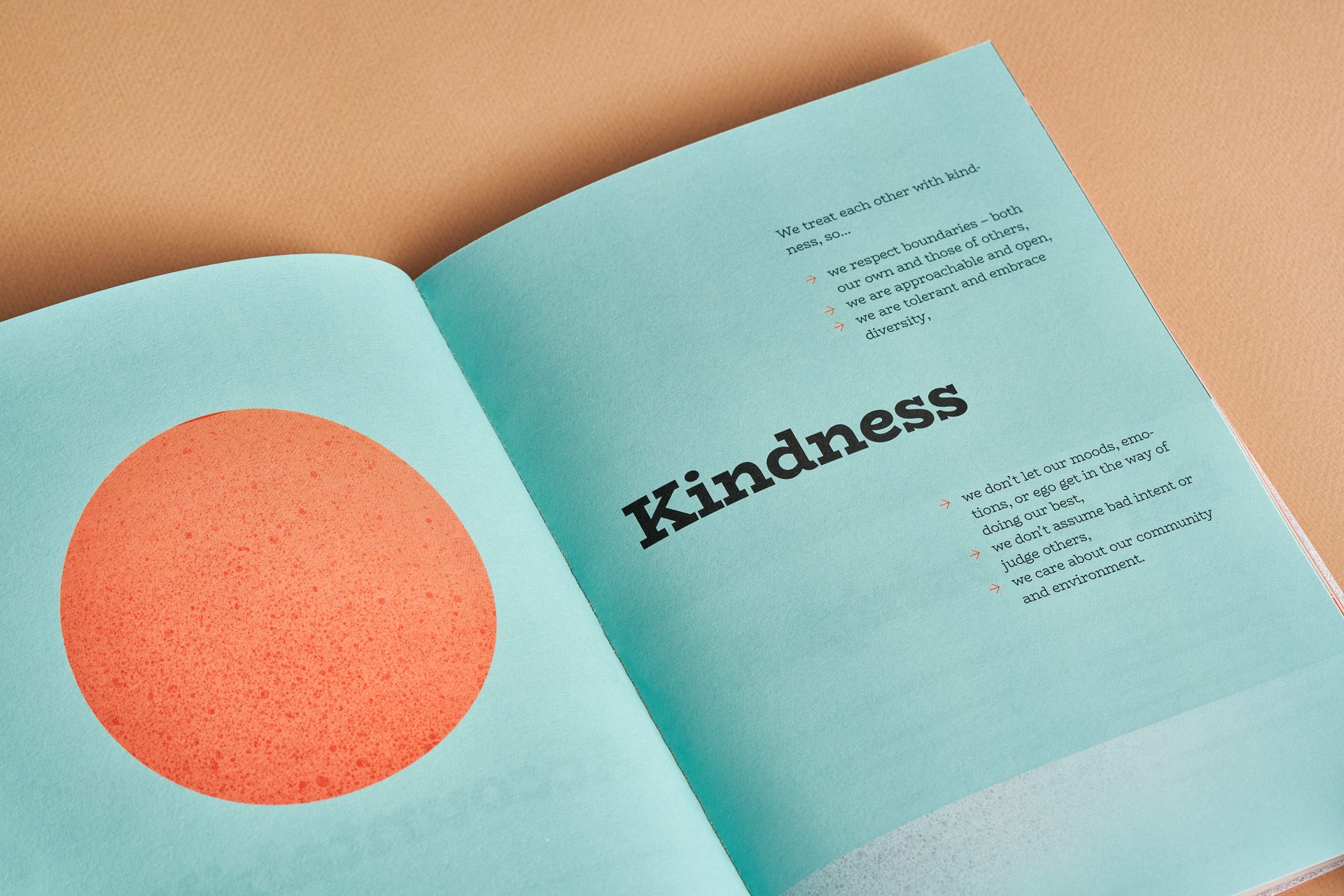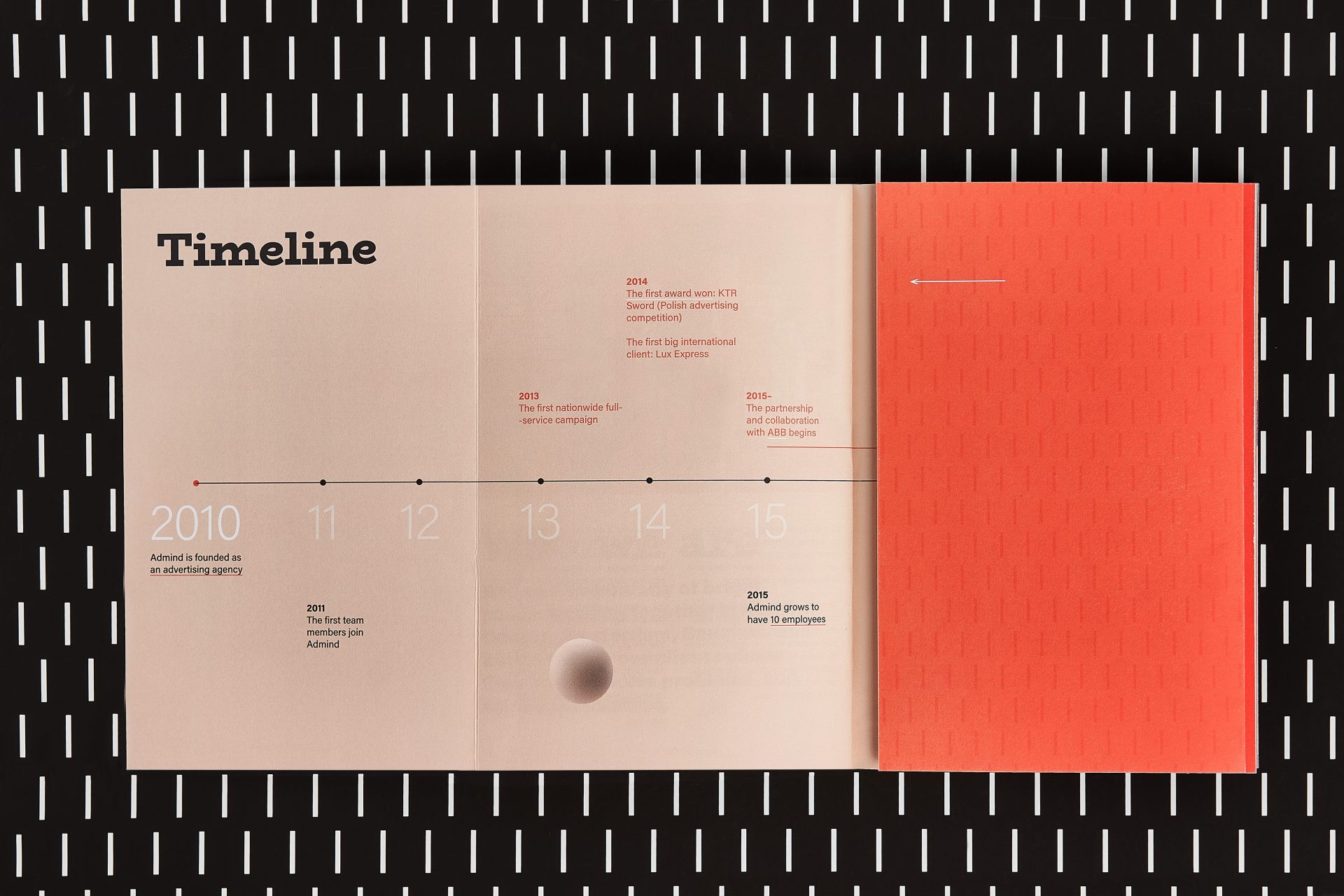Read an interview with Krzysztof Klimek, Creative Director at Admind Branding & Communications, and find out what culture book is and why every company should prepare their own. Here are some hints how to use it to empower your employer branding.
What exactly is a culture book and to whom it is addressed?
Krzysztof Klimek: A culture book is a publication that includes the essence of the organizational culture of a given company. This document introduces the culture book recipients to our organization, its approach to employees, and the brand values. It’s an excellent recruitment and branding tool. That’s why it should be prepared by every organization that thinks responsibly about employer branding.
The publication is primarily intended to serve employees. For an organization that is growing as fast as Admind, it makes sense to gather the most relevant information in one document. Secondly, potential future employees are also the recipients. If they are curious about the company and the brand, the culture book will tell them what kind of people work there and what is important to them. A well-designed culture book can also be a promotional material and huge support for sales and brand activities.

What are the characteristics of a well-prepared culture book?
Krzysztof Klimek: I’m going to tell something that might seem a little obvious, but I think it’s needed to be emphasized. First of all, a culture book should be genuine. All the content should be authentic and sincere, coming from inside the company and from its employees. Preparing it, be specific, open, and don’t dim!
When it comes to content, it’s important to describe elements such as mission, vision, company values, ways of communications, or rituals.
However, looking from the perspective of a brand and branding agency, I believe that a good culture book should also be well designed. It’s worth thinking about it strategically. Both in terms of content, typography, and composition, as well as possible brand development and expansion. To sum up: a good document of this type should be noticed also outside the organization.
Also, there is an additional aspect that is worth mentioning. Working on a culture book allows us to organize our knowledge about the company and the brand. Then map those elements that are missing in the organization, and provide invaluable knowledge about ourselves and how we work.

Why did you decide to create such a document?
Krzysztof Klimek: This is due to several issues. First, we follow very closely activities and new trends in areas related to employer branding. Secondly, at Admind we inspire each other and share interesting, similar solutions; this was also the case this time. Third, we think a lot about how to communicate with clients and candidates. We create internal strategic documents – so it was natural that we put our mission, values, history and what we are like on a daily basis in an appropriate form. Fourth, we focus our energies and commitment on finding the right candidates for the job. So we should look for all the tools and solutions available to encourage applications or accelerate the decision to get started.

What is so unique about Admind’s culture book?
Krzysztof Klimek: The uniqueness of Admind’s culture book comes directly from where we come from, who we are and where we are. We take special care to ensure that the voices of our Bangkok-based employees are just as important as those of our Krakow-based head office. We are mindful of how people in Amsterdam approach tasks and the presentation design sensibilities of those in Odessa. It’s no secret that managing and creating a culture in such a diverse environment is a challenge. This is probably a topic for another interview. I just want to emphasize here how important it was to properly highlight this diversity. And at the same time to find one universal key for the whole publication.

To find something that ties the whole thing together?
Krzysztof Klimek: Exactly! For this purpose, we used the visual form, which is the closest to us in Admind. By this, I mean the illustrations, which are an integral part of every area of the culture book. In all our offices we have people who feel very comfortable with illustrations. As I said, it’s important for us to integrate our employees. That’s why we invited about 20 people from our teams in Amsterdam, Bangkok, Odessa, and Kraków and asked them to prepare projects that are primarily about them too. As a result, the publication features over 20 great and unique illustrations created by people from Poland, Thailand, Spain, England, Ukraine, and even Cuba.
It would be hard to find a more authentic message, so deeply rooted in Admind’s vision and culture. That’s why we didn’t limit the designers with detailed guidelines – we didn’t impose anything except colors, typography, and size. If we worked on such a publication for a client, we probably wouldn’t allow ourselves to interpret the brand so freely. But in the case of Admind’s Culture Book, we could and wanted to do so.

Was it challenging to coordinate such a project with so many people involved?
Krzysztof Klimek: It was definitely a challenge for both the project leaders and everyone who put the project together afterward. For us, brand consistency and compliance with brand guidelines are determinants of most projects. We had to convince ourselves that the direction we took made sense. That we could achieve this consistency using different methods than usual.
As for the coordination of people from different offices, the challenge was mainly timing. We already have some experience in this, because we work in the same group on different projects. And partly switching to remote working only helped.

How long does it take to create the culture book?
Krzysztof Klimek: Creating a culture book is a detailed process of gathering all the information about the company, but also verifying values, mission, and vision. To be honest, it took more time than we initially expected. I think it was because we always strive for perfection when working on all our projects. Plus we wanted to give space for each designer to express themselves artistically.

Can you point out interesting examples of other culture books?
Krzysztof Klimek: It’s not easy to point out many examples because still few companies (especially in Poland) publish culture books on the internet or in printed form. A very interesting series of such publications is created periodically by Zappos, a very large American brand selling shoes and clothing online. It’s a real inspiration both in terms of design and the way they write about themselves, as well as in terms of promoting the culture book.
In Poland, I would certainly point to Netguru, which has paved the way for other companies in the industry, and of course ING, which in my opinion perfectly captured the spirit of the brand and the image of the entire organization.
However, I am sure that we were the ones who approached the topic in the most original way. I hope that our publication will become a model for others.

